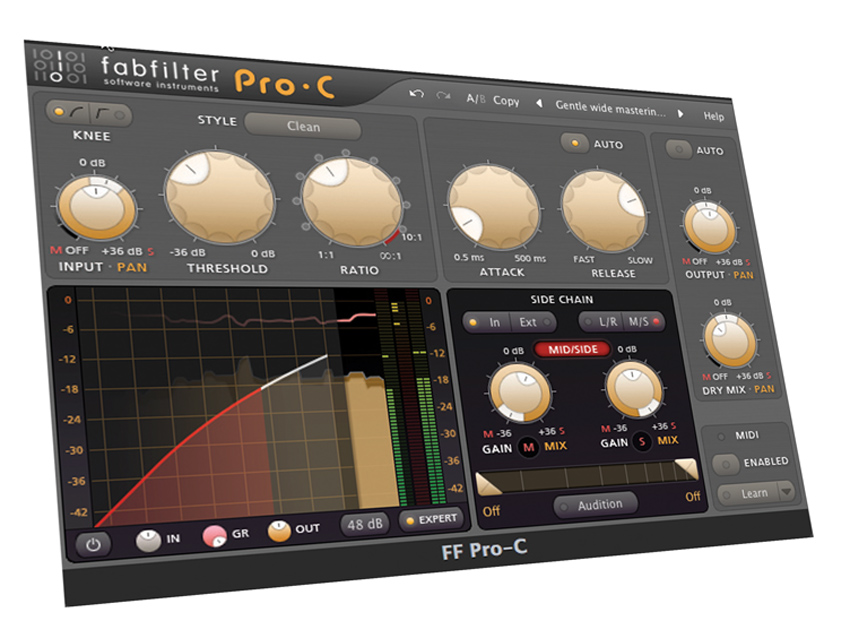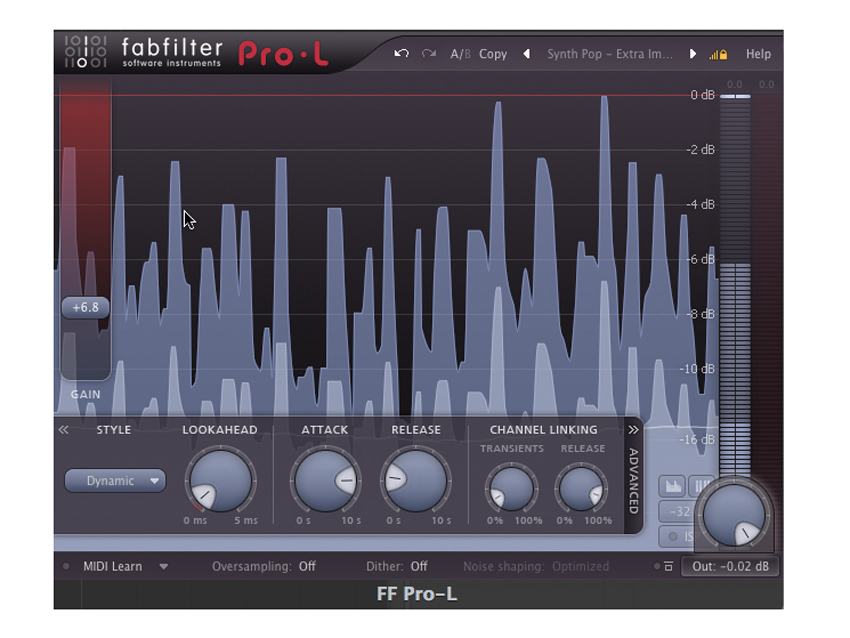MusicRadar Verdict
Provides all the mastering tools you could need. A real power-house and another fine mastering solution.
Pros
- +
Intuitive design. Can handle more 'extreme' settings. Suitable for a range of applications.
Cons
- -
Few to speak of.
MusicRadar's got your back

FabFilter Mastering Bundle

FabFilter Mastering Bundle

FabFilter Mastering Bundle
With more of us completing mastering options from our own studios these days, it's perhaps no surprise than a number of 'suites' have launched to help us on our way.
Some might call the market bloated, but that hasn't deterred FabFilter from getting in on the act with this bundle of three processors, namely the Pro-C compressor, the Pro-Q equaliser and the Pro-L limiter. Let's take a look at the bunch.
Compress me
First up to the bench is the Pro-C mastering compressor. Like the other plug-ins in the suite, this is beautifully designed and contains a good deal more control than meets the eye from the default setting.
Across the top section, you'll find Input, Threshold and Ratio dials, followed by Attack and Release knobs to the right. Below this, the Pro-C begins to show its versatility with classic Left/Right operation enhanced by a Mid/Side option as well, plus the ability to monitor direct audio or hear the compressor as affected by a sidechain source.
There's even discreet monitoring for both sidechain and M/S modes, with low- and high-pass filter options for any sidechain source. A click of the Audition button allows you to hear the result while, in M/S mode, Audition routes the Mid signal to the left and the Side signal right so you can easily hear the details in your work.
Three modes - Clean, Classic and Opto - allow you to radically change the sonic characteristics of the compressor from clean and transparent through to warm and retro.
One note of warning - up to 36dB of output volume can be added with the 0dB position at the top of this dial rather than far right. Be careful not to cook your speakers!
Want all the hottest music and gear news, reviews, deals, features and more, direct to your inbox? Sign up here.
Super-toned
The Pro-Q is our favourite of the three processors, due to its extraordinarily flexible nature, great sound and wonderful interface. This is unlike any other EQ we've ever used as, rather than a fixed number of bands which can be enable or otherwise, the default setting simply shows a flat EQ line.
To enable a band, you simply double-click on the line and one appears, ready to be dragged up and down for cut or boost. Hold down 'command-Alt' at the same time and you'll adjust 'Q' for that band. Up to 24 bands can be set up simultaneously which represents huge flexibility and an Analyzer can be enabled for both pre- and post-EQ graphs.
Left/Right and M/S modes are available here too and what we particularly like is how the graphic 'blobs' representing each band adjust if you widen an adjacent 'Q' point. This shows the cut/boost implications of overlapping bands neatly, while the sound is wonderful, allowing you to introduce serious cuts and boosts without producing over-bright or over-dull results.
A wall of bricks
The Pro-L Limiter provides output limiting, coupled to a display that really keeps you in touch with what's going on in the track. Input volume is adjusted on the left, without output ceiling in the bottom right-hand corner, while long LED ladder read-outs keep you in touch with the relevant levels.
The Advanced Tab toggles open the other dials you might expect, with adjustable Lookahead, Attack and Release times as well as Channel Linking options for Transient detection and Release. Additionally, there are four operational modes which allow you to shape tone to taste.
This is a flexible, attractively designed and great-sounding bundle and it comes thoroughly recommended.
Future Music is the number one magazine for today's producers. Packed with technique and technology we'll help you make great new music. All-access artist interviews, in-depth gear reviews, essential production tutorials and much more. Every marvellous monthly edition features reliable reviews of the latest and greatest hardware and software technology and techniques, unparalleled advice, in-depth interviews, sensational free samples and so much more to improve the experience and outcome of your music-making.
